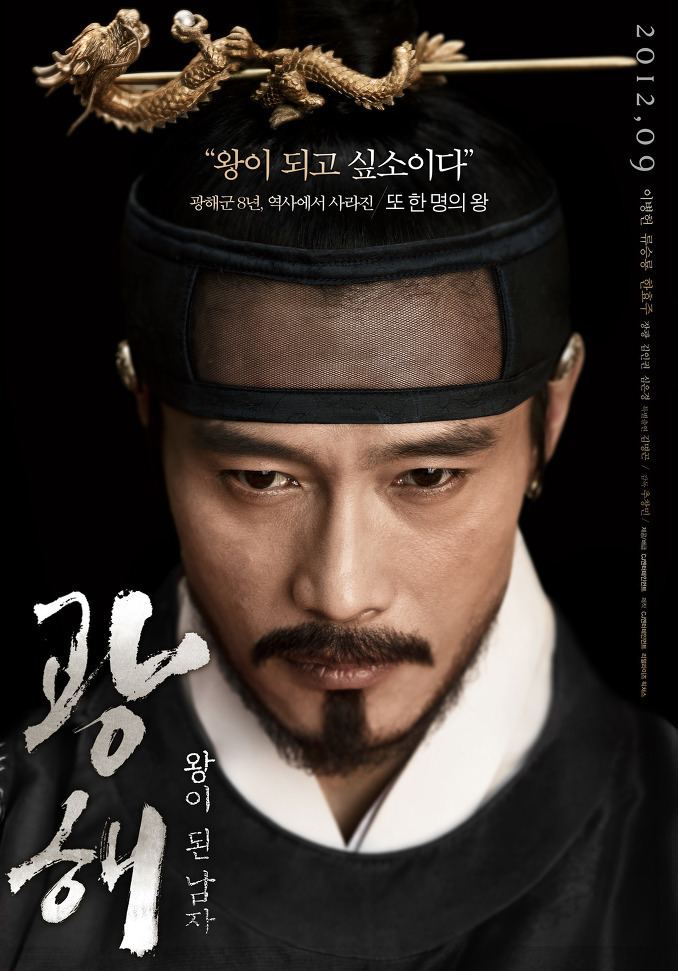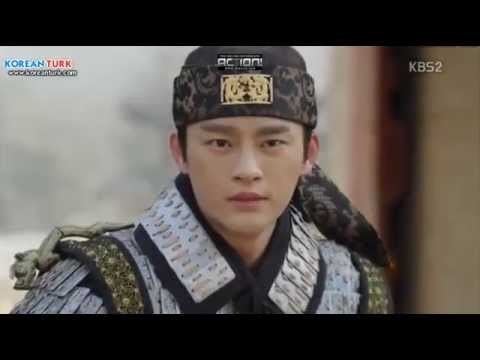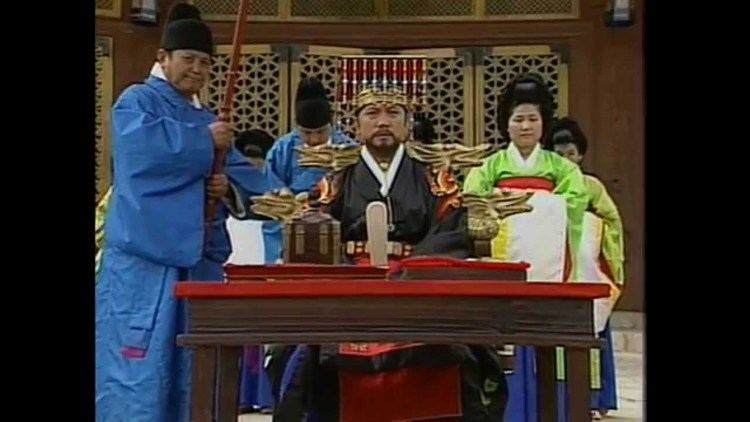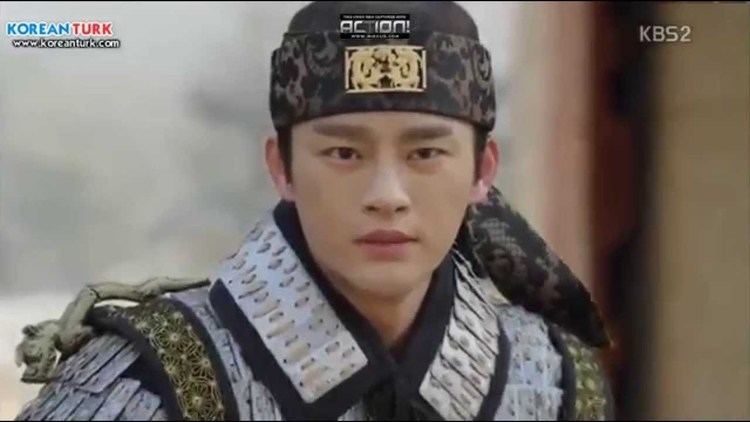Hangul 광해 Hangul 이혼 Children Yi Ji McCune–Reischauer Kwanghae Role King | Revised Romanization Gwanghae Name Gwanghaegun Joseon Hanja 光海君 Hanja 李琿 | |
 | ||
Spouse Queen Munseong of the Yu clan (m. 1576–1623) Siblings Princess Jeongmyeong, Grand Prince Yeongchang Parents Seonjo of Joseon, Royal Noble Consort Gong of the Kim clan Similar People | ||
masquerade 2 hd
Gwanghae-gun or Prince Gwanghae (3 June 1575 – 7 August 1641; reigned 1608–1623) was the fifteenth king of the Joseon dynasty. His personal name was Yi Hon. As he was deposed in a coup d'état, later official historians did not give him a temple name like Taejo or Sejong.
Contents
- masquerade 2 hd
- The king s face prince gwanghae i mjin war
- Birth and Background
- Violence of Greater Northerner faction
- Achievements
- Dethronement and later life
- Legacy
- Family
- His eulogistic posthumous name
- Film and television
- Literature
- References

The king s face prince gwanghae i mjin war
Birth and Background

Gwanghaegun was the second son of King Seonjo, born to Lady Kim (Gongbin), a concubine. When Japan invaded Korea to attack the Ming Empire, he was installed as Crown Prince. When the king fled north to the border of Ming, he set up a branch court and fought defensive battles. During and after the Seven Year War (1592–1598), he acted as the de facto ruler of the Joseon Dynasty, commanding battles and taking care of the reconstruction of the nation after the devastating wars, in the place of old and weak King Seonjo.
Although it brought prestige to him, his position was still unstable. He had an elder but incompetent brother Prince Imhae ( Imhaegun, 임해군, 臨海君) and a younger but legitimate brother Grand Prince Yeong-chang (Yeong-chang Daegun, 영창대군, 永昌大君), who was supported by the Lesser Northerners faction. Fortunately for Gwang-hae, King Seonjo's abrupt death made it impossible for his most favorite son Yeong-chang Daegun to succeed to the throne.
Violence of Greater Northerner faction

Before King Seonjo died, he named Prince Gwang-hae as his official successor to the throne, and ordered his advisers to make a royal document. However, Lyu Young-gyong of Lesser Northerners faction hid the document and plotted to install Prince Yeong-chang as king, only to be found out by the head of the Great Northerners faction (대북; 大北), Chung In-hong. Lyu was executed immediately and Prince Yeong-chang was arrested and died the next year.
After the incident, Gwang-hae tried to bring officials from various political and regional background to his court, but his plan was interrupted by Greater Northerners including Lee Icheom and Chung In-hong. Then Greater Northerners began to take members of other political factions out of the government, especially Lesser Northerners. At last in 1613 Greater Northerners put their hand on Prince Yeong-chang; his grandfather Kim Jenam was found guilty of treason and executed, while Yeong-chang was sent into exile, where he was executed. At the same time Greater Northerners suppressed the Lesser Northerners; In 1618, Yeong-chang's mother, Queen In-mok, was stripped of her title and imprisoned. However, Gwang-hae had no power to stop this even though he was the official head of the government.
Achievements
Despite his bad reputation in later times, he was a talented and realistic politician. He endeavored to restore the country and sponsored restoration of documents. As a part of reconstruction, he revised land ordinance and redistributed land to the people; he also ordered the rebuilding of Changdeok Palace along with several other palaces. He was also responsible for the reintroduction of the hopae identification system after a long period of disuse.
In foreign affairs he sought a balance between the Ming Empire and the Manchus. Since he realized Joseon was unable to compete with Manchu military power, he tried to keep friendly relationship with the Manchus while the kingdom was still under the suzerainty of Ming, which angered the Ming and dogmatic Confucian Koreans. The critically worsened Manchu-Ming relationship forced him to send ten thousand soldiers to aid Ming in 1619. However, the Battle of Sarhū ended in Manchu's overwhelming victory. The Korean General Gang Hong-rip lost two-thirds of his troops and surrendered to Nurhaci. Gwanghaegun negotiated independently for peace with the Manchus and managed to avoid another war. He also restored diplomatic relationship with Japan in 1609 when he reopened trade with Japan through Treaty of Giyu, and sent his ambassadors to Japan in 1617.
During his reign, Gwanghaegun encouraged publishing in order to accelerate reconstruction and to restore the kingdom's former prosperity. Many books came out during his reign, including the famous medical book Donguibogam, and several historical records were rewritten in this period.
Also, for his job in public affair, he implemented daedong law ; which let the subjects to pay the tax in much more easier way. However, this law was activated only in Gyeonggi Province , which was the largest granary zone at that time ; it carried out all over the joseon only after 100 years.
In 1616, tobacco was first introduced to Korea and soon popularized by many aristocratic noblemen.
Dethronement and later life
In 1623 Gwanghaegun was deposed in a coup by the Westerners faction. He was confined first on Ganghwa Island and then on Jeju Island, where he died in 1641. He does not have a royal mausoleum like the other Joseon rulers. His and Lady Ryu's remains were buried at a comparatively humble site in Namyangju in Gyeonggi Province. The Westerners faction installed Neungyanggun as the sixteenth king Injo who promulgated pro-Ming and anti-Manchu policies, which resulted in two subsequent Manchu invasions.
Legacy
Although Gwanghaegun is one of only two deposed kings who were not restored and given the temple name (the other one being Yeonsangun, the tyrant who greatly contributed to the decline of the nation), many people consider him a victim of feuds between political factions. However he did a better job of caring for his country than his predecessor King Seonjo, or his successor King Injo. They both contributed to invasions—the Japanese invasions of Korea (1592–1598), the Seven Year War; and the Manchu Invasion. In modern South Korea, Gwanghaegun is considered one of the wiser kings rather than a despot.
Family
- Deposed Queen Yu of the Munhwa Yu clan (15 August 1576 – 31 October 1623) (폐비 유씨)
- Yi Ji, Deposed Crown Prince (31 December 1598 – 22 July 1623) (이지 폐세자)
- Royal Consort So-ui of the Papyeong Yun clan (? – 14 March 1623) (소의 윤씨)
- Unnamed daughter (1619–1664) (옹주)
- Royal Consort So-ui of the Hong clan (? – 1623) (소의 홍씨)
- Royal Consort So-ui of the Kwon clan (숙의 권씨)
- Royal Consort Suk-ui of the Yangcheon Heo clan (숙의 허씨)
- Royal Consort Suk-ui of the Wonju Won clan (숙의 원씨)
- Royal Consort So-yong of the Dongnae Jeong clan (? – 13 March 1623) (소용 정씨)
- Royal Consort So-yong of the Pungcheon Im clan (1598 – 1628) (소용 임씨)
- Royal Consort So-won of the Shin clan (소원 신씨)
- Royal Consort Suk-won of the Han clan (숙원 한씨)
- Court Lady Kim Gae-Si (1584 – 1623) (상궁 김씨, 김개시)
- Court Lady Lee (상궁 이씨)
- Court Lady Choi (상궁 최씨)
- Court Lady Jo (궁인 조씨)
- Court Lady Byeon (궁인 변씨)
